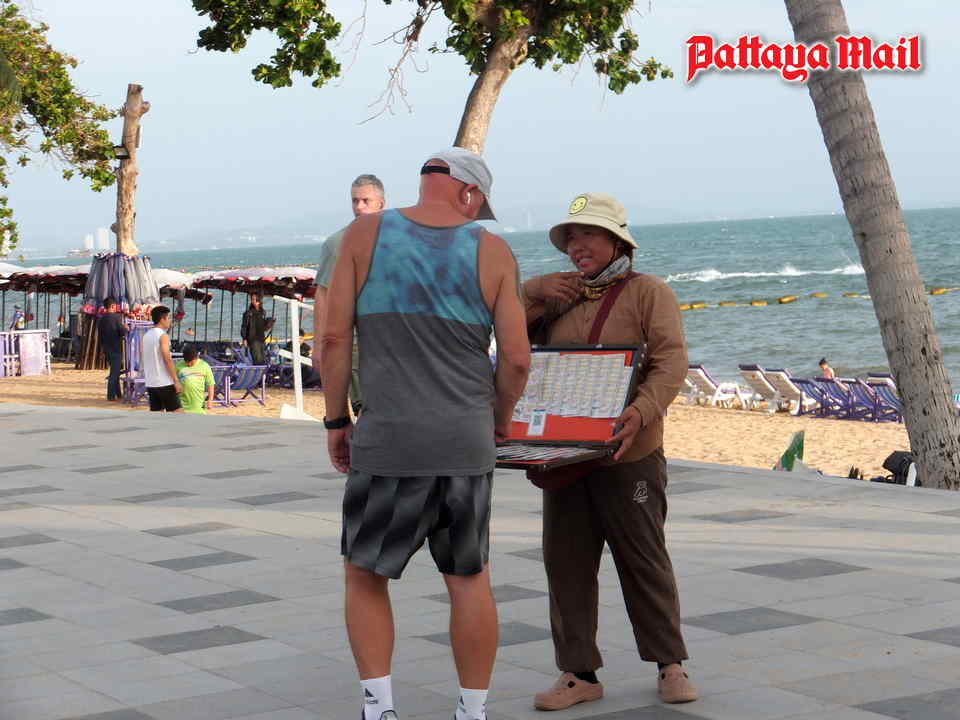Thai baht’s unusually strong gains pose risks to Pattaya’s tourism — experts guide through its impact and expectations
Currency volatility adds to Pattaya’s ongoing challenges, testing the city’s hopes for growth under Thailand’s new sustainable tourism strategy. (Photo by Jetsada Homklin)
PATTAYA, Thailand – The Thai baht has been remarkably strong in 2025, driven by factors such as surging gold exports and a weakening U.S. dollar. However, economists warn that this currency surge could hamper Thailand’s crucial tourism sector — a concern that hits especially close to home in Pattaya, one of the country’s most popular destinations. Compared to regional competitors like Vietnam, Indonesia, and Malaysia, whose currencies have remained more favorable to foreign tourists, Thailand risks pricing itself out of the affordable getaway market that has long been its strength.
Dr. Amorntep Chawla, Assistant Managing Director at CIMB Thai Bank, explains that the baht’s rapid appreciation is partly due to Thailand’s gold export revenues being converted back into baht, pushing the currency’s value higher than many regional peers. This, combined with market reactions to U.S. trade policies and tariff uncertainties, has created volatility in exchange rates. “The baht’s strength is volatile, and it may swing both ways,” Dr. Amorntep noted, forecasting the currency to trade between 32.90 and 33.30 baht per U.S. dollar by year-end.
However, a strong baht poses risks for sectors heavily dependent on foreign spending, particularly tourism and exports. Pattaya, which draws millions of international visitors each year, is already grappling with challenges related to image and infrastructure. The rising baht threatens to reduce the purchasing power of foreign tourists, potentially deterring long-term visitors and impacting revenue from tourism-related businesses.
Local tourism operators in Pattaya are voicing cautious concern. One beer bar owner remarked, “A stronger baht means fewer tourists willing to spend here, especially from Western markets. We’re watching closely because tourism is the lifeblood of this city.”
Burin Adulwatana, Managing Director and Chief Economist at Kasikorn Research Center, believes Thailand’s central bank may cut interest rates due to the weakening economic outlook in the second half of 2025, signs of a recession, and trade pressures. He expects the Bank of Thailand to lower its policy rate from 1.75%—possibly twice, in October and December—to weaken the baht, which has been stronger than regional currencies due to capital inflows. A weaker baht could help support exports and tourism. For now, he sees the baht trading around 33.50 per U.S. dollar.
Patrick Pulia, Senior Executive Vice President and Head of Financial Markets and Private Banking at Siam Commercial Bank, said the baht’s strength is expected to moderate in the second half of the year, likely trading between 31.50 and 32.50 per US dollar. This is due to a slightly weaker US dollar influenced by expected Federal Reserve rate cuts and capital outflows from the US.
He explained that the baht’s recent rapid appreciation was driven by concerns over the growing US fiscal deficit and relatively limited global economic impact from tariffs—factors already priced into the market. As the US gains revenue from tariffs later this year, worries over US fiscal health may ease, limiting further dollar weakness and resulting in only slight baht gains.
Regarding exporters, Pulia expects the Bank of Thailand to manage baht volatility but not quickly weaken the currency. Exporters may need to manage currency risk through tools like FX options. While further interest rate cuts by the Monetary Policy Committee are possible, these would be motivated more by domestic economic conditions than by attempts to influence the baht.
Pattaya’s tourism sector, which has been encouraged by the Tourism Authority of Thailand’s (TAT) ambitious 2026 strategy focusing on quality and sustainable tourism, faces a critical test as currency dynamics add to existing challenges. While TAT aims to attract high-value visitors and diversify markets, the baht’s strength could blunt these efforts by making Thailand a more expensive destination.
With economic uncertainties continuing and global markets in flux, Pattaya’s future tourism growth hinges not only on strategic policy execution but also on stabilizing currency conditions that allow visitors to feel their money goes further.
As the baht’s tides ebb and flow, Pattaya waits with cautious optimism — eager to capitalize on new tourism initiatives but mindful of the economic headwinds that a strong currency can bring.



